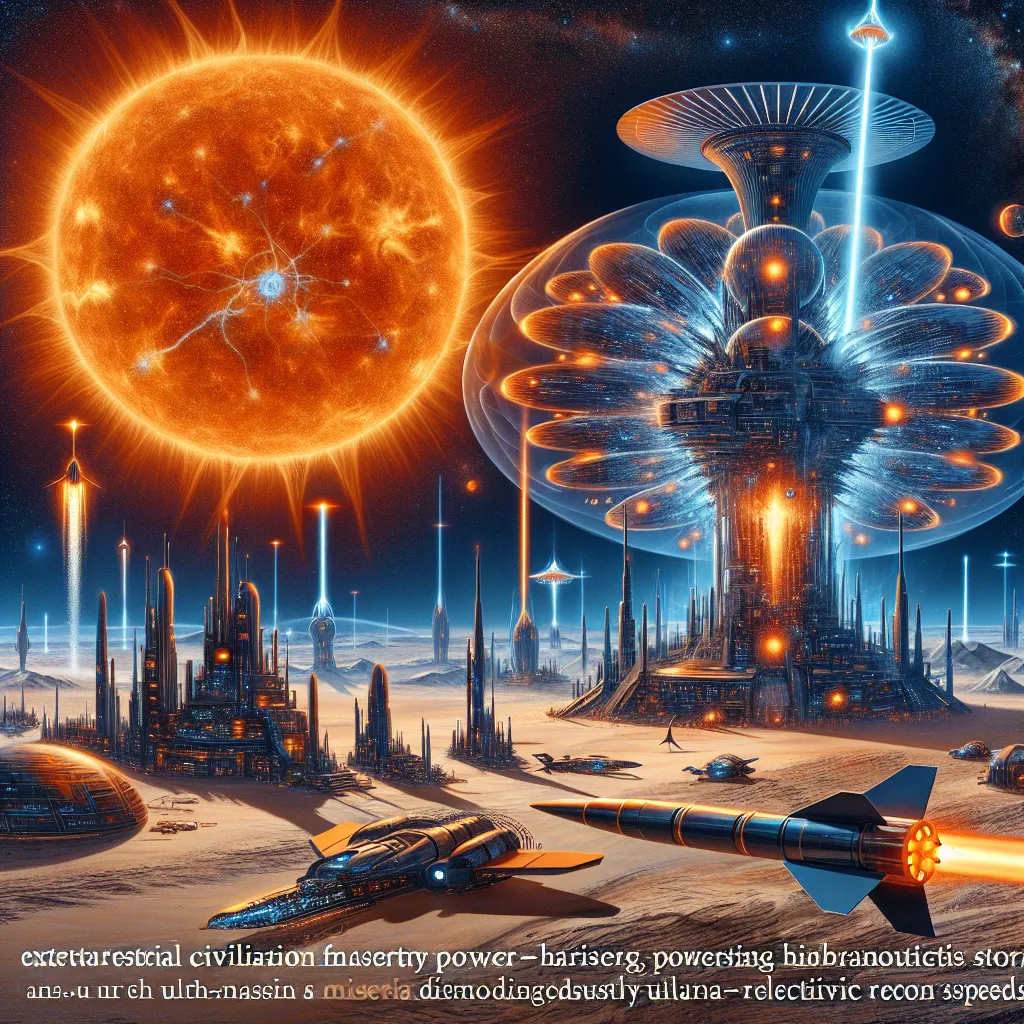Some stories come along that just blow the proverbial cobwebs off of the old imagination, stirring up conversations that science fiction writers would drool over. Picture this: two Russian scientists in December 1990, holed up in a remote village above the Arctic Circle, conducting experiments that were nothing short of mind-bending. They built a contraption aimed to boost human extrasensory perception (ESP), forming a concoction of sci-fi props meets cutting-edge science.
Their invention was an aluminum tube, large enough to seat a person in a chair within it, designed to block electromagnetic interference while allegedly enhancing biological energy. From the moment it was up and running, strange phenomena started to unravel, draping the picturesque small village in more mystery than a Sherlock Holmes novel. Unidentifiable disc-shaped lights lingered around, energy spheres flickered in and out of existence, and the Northern Lights put on such brilliant shows, they appeared almost tangible. If that wasn’t hair-raising enough, trying to persuade someone to sit in that chair was a challenge due to an unexplained aura of dread it cast on the folks nearby.
When someone finally settled in for a test run, things went haywire—a bright energy flash stunned the room, and the results were astonishing. The device did more than tap into psychic territories; it turned into what can only be described as a vehicle for time travel, as subjects reported viewing locations across both the globe and, stunningly, across time. The bold experiments resonated with theories from way back in the 1950s, suggesting time as we know it is but an illusion. These daring endeavors painted time as a constant ‘now’, reshaping ages-old philosophical musings about its true nature.
Let’s spin the Earth a bit to shift focus over to Nikolai Kozyrev, the Russian physicist whose unconventional theories serve as the backbone of these experiments. Although seldom a household name, Kozyrev’s work laid down propositions that still echo through scientific debates today. His controversial ideas, often dismissed by the mainstream science community, found vindication over time. Among his astonishing assertions—he once reported volcanic activity on the moon in 1958, a declaration that was scorned until the Apollo missions brought back undeniable evidence. No matter where Kozyrev turned, his concepts seemed one step ahead or perhaps just a bit too ‘out-there’ for the scientific palate of the time.
The heart of Kozyrev’s work beat with the rhythm of torsion. Now, in everyday speak, torsion relates to the twisting of any object under stress. But when exploring theoretical physics, torsion refers to the twisting of space-time itself, like an ultra-complex version of wringing a wet towel. Kozyrev posited that beyond the familiar buoyancy of Einstein’s theory of relativity, which likens gravity to a bowling ball depressing a stretched rubber sheet (space-time), there exists an invisible Ether. This Ether allegedly permeates the universe much like water supports a fish, or air gives lift to birds. Lost in abandonment after 19th-century experiments failed to prove its existence, Kozyrev reintroduced Ether as the highway down which time energy travels, its influence spanning from the spin of galaxies to the color of one’s eyes.
In this light, time isn’t simply a relentless river carrying us from yesterday to tomorrow. Kozyrev suggested it’s alive, twisting and influencing our reality, with human intuition potentially tapping into this time energy. Hypothetically speaking, that river behind is just as real as today’s waters, possibly accessible through the right cerebral prowess or, perhaps, strategic use of mirrors.
And here’s where the plot thickens—Kozyrev crafted a device, essentially an advanced concave mirror, to manipulate time’s energy, claiming it could even allow for peeks into the future. Concave mirrors have played essential roles throughout history, from Greek ceremonial fires to Newton’s telescopic observations. Kozyrev believed they held the power to focus time energy, much like they focus light. His research pushed boundaries and purportedly achieved microscopic time bending, an endeavor cut short when he mysteriously passed away in the early ’80s.
Fast forward again to those eerily enticing experiments post-Kozyrev, in a realm where strange spheres of light dance above a lab and psychonauts (as the subjects were charmingly dubbed) embark on audacious mental voyages. The results? Absolutely electrifying. Subjects claimed their thoughts transcended everyday psychic feats, influenced by the cosmic influx of energy from the Earth’s magnetic interplay, intertwined with the sunspot cycles.
The key to these journeys seemed linked to the energetic heartbeats of our home planet, as solar storms heightened participants’ psychic receptivity. Even children, especially those born into spiritually rich or shamanic backgrounds, exhibited remarkable psychic prowess during these experiments. The extraordinary endeavor prompted even the CIA to pay heed, with the ripple effects suggesting a human consciousness deeply tied to Earth’s magnetic core.
Fear, UFO sightings, and mysterious observers—experiments veered towards the paranormal, leaving participants shivering with both terror and awe. Despite encountering cryptic entities dubbed ‘The Observers’—ethereal humanoid figures devoid of detail—many grew more aligned with reality outside the mirror than the one inside it. Some even reported experiencing their past lives vividly and interacting with their childhood selves, a notion that blurs the very essence of memory and time.
Yet, despite the groundbreaking potential, mainstream science has left the technology stranded on the fringes, dismissing these results as impractical fiction. The few open ears resided within intelligence agencies, particularly the CIA, far more enthralled by its potential than the scientific community. Regardless of skepticism, advocates urge for greater exploration, fearing its sequestration by elite powers.
Kozyrev’s philosophical stroke of deeming time a moldable, tangible energy paints a world where destiny isn’t written in stone. Instead, knowledge arms humanity with the power to bend time’s flow, revealing a touching message about our place within the cosmic spinning wheel. The prospect of time-bending mirrors doesn’t just tantalize the credulous—it invites everyone on a journey, daring us to think beyond, explore the unseen, and maybe, just maybe, clutch a slice of infinity.
Perhaps it’s time we all undust our science kits and dig into these mysteries, encouraging a global leap towards unfurling the universe’s tightly held secrets. Whether you’ve been yearning for a weekend DIY or the adventure of a lifetime, here’s a nudge towards uncovering more, perhaps starting at your local hardware store. The notion of exploring the vastness of time and space could be as near as your next aluminum sheet purchase. So, are you in for a thrilling chase down the rabbit hole?






